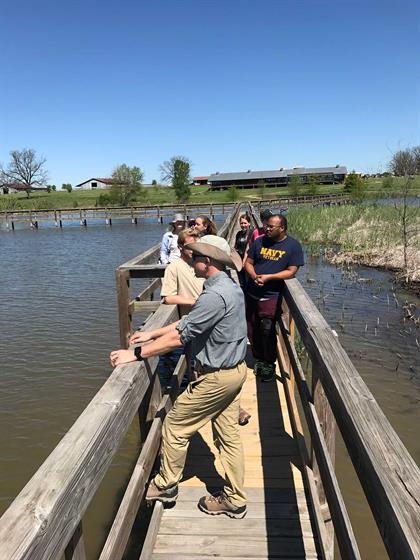 Texas A&M Law School students traveled to the John Bunker Sands Wetlands in Seagoville, Texas, on Friday, March 31 to explore and understand how the concepts they learned in the classroom operate in practice.
Texas A&M Law School students traveled to the John Bunker Sands Wetlands in Seagoville, Texas, on Friday, March 31 to explore and understand how the concepts they learned in the classroom operate in practice.
The artificial wetland covers 1,840 acres, making it the largest constructed wetland project in the country. It is now the home of over 250 bird species, and serves an important purpose for the North Texas Municipal Water District (NTMWP): it cleans wastewater.
The wetlands provide the NTMWP with over 102,000 acre-feet of recycled water per year. Water originating from nearby wastewater treatment facilities, under NTMWP’s return flow water rights, is diverted from the East Fork of the Trinity River and passed through the wetlands. After the water is filtered through the system, it is pumped to Lake Lavon for storage and use.
The wetland is separated into multiple wetlands cells that can be drained individually by diverting water between the cells while staff conduct maintenance activities, such as managing plants or rebuilding the walkways. The first section of the wetland acts as a sedimentation basin where sediments and solids that were not removed in the wastewater treatment processes fall to the bottom of the cells. The rest of the wetlands treat the water through the natural process provided by aquatic plants.
The NTMWP plans to expand its treatment operations by pumping additional water to the wetlands from the Trinity River Authority’s return flows. Because the wetlands were constructed “off channel”, they are not connected to Waters of the United States, which would require a permit under the Clean Water Act.